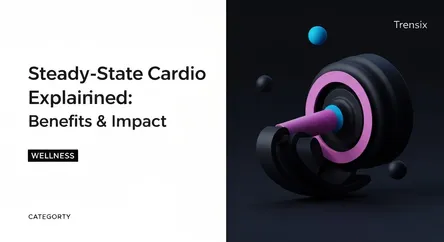Wellness
Steady-State Cardio Explained: Benefits & Impact

Discover steady-state cardio, a sustained, moderate-intensity workout designed to improve endurance, burn fat, and boost heart health effectively.
What is it?
Steady-state cardio is a form of aerobic exercise that involves maintaining a consistent, low-to-moderate intensity pace for an extended period, typically 30 to 60 minutes. Unlike high-intensity interval training (HIIT), which involves alternating bursts of intense effort with rest periods, steady-state cardio keeps your heart rate consistent, usually within 60-70% of your maximum. This type of exercise is performed at a level where you can hold a conversation. Common examples include jogging at a comfortable pace, cycling at a consistent speed, swimming laps, or using an elliptical machine.
Why is it trending?
Steady-state cardio is a popular and enduring fitness method because it is accessible to all fitness levels, from beginners to endurance athletes. It is less strenuous on the body and has a lower risk of injury compared to high-impact workouts, making it a sustainable choice for long-term fitness. It's an effective tool for building aerobic endurance, improving the body's ability to use fat for fuel, and can be used for active recovery on days off from more intense training. Many also find the rhythmic, sustained nature of the exercise to be meditative and beneficial for managing stress.
How does it affect people?
Engaging in regular steady-state cardio has numerous positive effects. It strengthens the heart and lungs, leading to improved cardiovascular health, lower blood pressure, and better circulation. This form of exercise is particularly effective at burning fat for energy, which can aid in weight management. It enhances muscular endurance by increasing the efficiency of oxygen delivery to the muscles. For many, it's a more enjoyable and less intimidating form of exercise, which can lead to greater consistency. Regular sessions can also boost mental clarity and reduce stress by stimulating the release of endorphins.